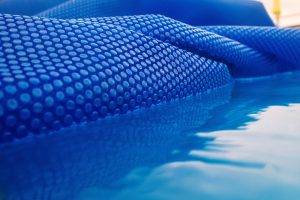Hi there, I'm new here (this is my first post).
Bought a house last summer with a pool and I was lucky enough to have the fall/winter/spring to lurk around here as well as have a little trial and error of my own. At this point, I'm moderately confident in my pool care system and routine. However, as warmer temps start to arrive I know my routine will ramp up a bit.
Here's my most recent water chemistry:
FC: 1.04
TC: 1.24
pH: 8.00
Al: 115
CH: 337
CYA: 98
TDS: 1100
Phos: 1038
I will be following the pool math calculator to super chlorinate and bring down pH and I'm also stopping use of all stabilizer products to try and bring CYA down without draining during our rainy Spring. My question is around phosphates. I have a TON of live oak trees around the pool which are going through their annual Spring dump... first dropping all their leaves and now dropping a boat load of pollen. I assume they are to blame for my high phosphates. Is there a consensus on whether or not I should be treating for them? Leslie's sold me on a phosphate remover from Trade Grade which seems like pretty strong stuff. Is it worse to add these harsh products vs. to have high phosphates?
TIA for any guidance!
Bought a house last summer with a pool and I was lucky enough to have the fall/winter/spring to lurk around here as well as have a little trial and error of my own. At this point, I'm moderately confident in my pool care system and routine. However, as warmer temps start to arrive I know my routine will ramp up a bit.
Here's my most recent water chemistry:
FC: 1.04
TC: 1.24
pH: 8.00
Al: 115
CH: 337
CYA: 98
TDS: 1100
Phos: 1038
I will be following the pool math calculator to super chlorinate and bring down pH and I'm also stopping use of all stabilizer products to try and bring CYA down without draining during our rainy Spring. My question is around phosphates. I have a TON of live oak trees around the pool which are going through their annual Spring dump... first dropping all their leaves and now dropping a boat load of pollen. I assume they are to blame for my high phosphates. Is there a consensus on whether or not I should be treating for them? Leslie's sold me on a phosphate remover from Trade Grade which seems like pretty strong stuff. Is it worse to add these harsh products vs. to have high phosphates?
TIA for any guidance!


 First thing you will hear at TFP is stay out of the pool store for their testing. Those numbers could be drastically off which would result in unwarranted changes. We urge all members to have a TF-100 (link in my signature) or Taylor K-2006C for "accurate" at-home testing. It all starts there believe me. from there, we can help. If your CYA is indeed close to 100, your first order of business would be to exchange some water. Then we can help you adjust everything else. Using the
First thing you will hear at TFP is stay out of the pool store for their testing. Those numbers could be drastically off which would result in unwarranted changes. We urge all members to have a TF-100 (link in my signature) or Taylor K-2006C for "accurate" at-home testing. It all starts there believe me. from there, we can help. If your CYA is indeed close to 100, your first order of business would be to exchange some water. Then we can help you adjust everything else. Using the  As for phosphates, that's pool store trickery. Ha ha. I haven't tested my phosphates in years, and honestly it shouldn't matter. Don't fall for the bottles of PhosFree or other snake oils. Use your money for a good test kit. When water is properly chlorinated, phosphates are of no consequence.
As for phosphates, that's pool store trickery. Ha ha. I haven't tested my phosphates in years, and honestly it shouldn't matter. Don't fall for the bottles of PhosFree or other snake oils. Use your money for a good test kit. When water is properly chlorinated, phosphates are of no consequence.
